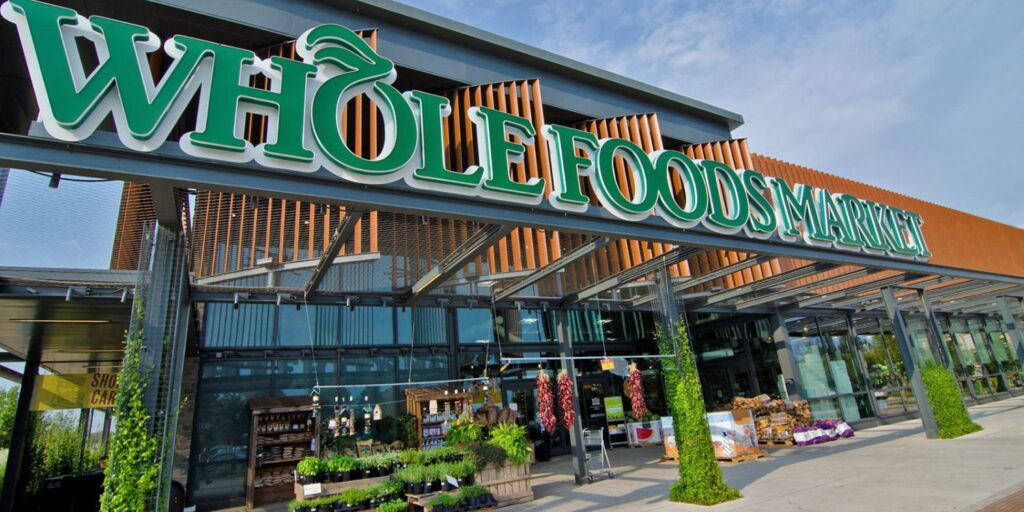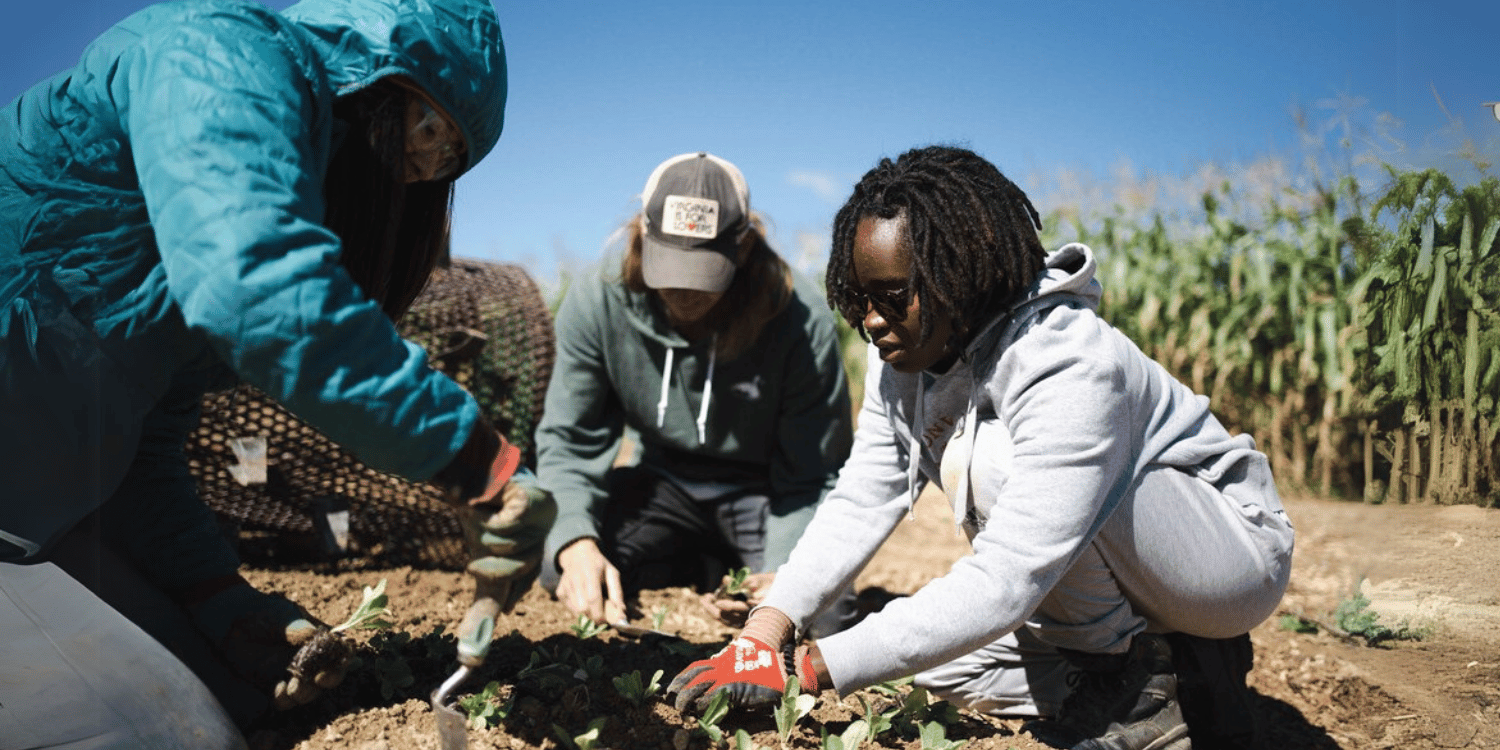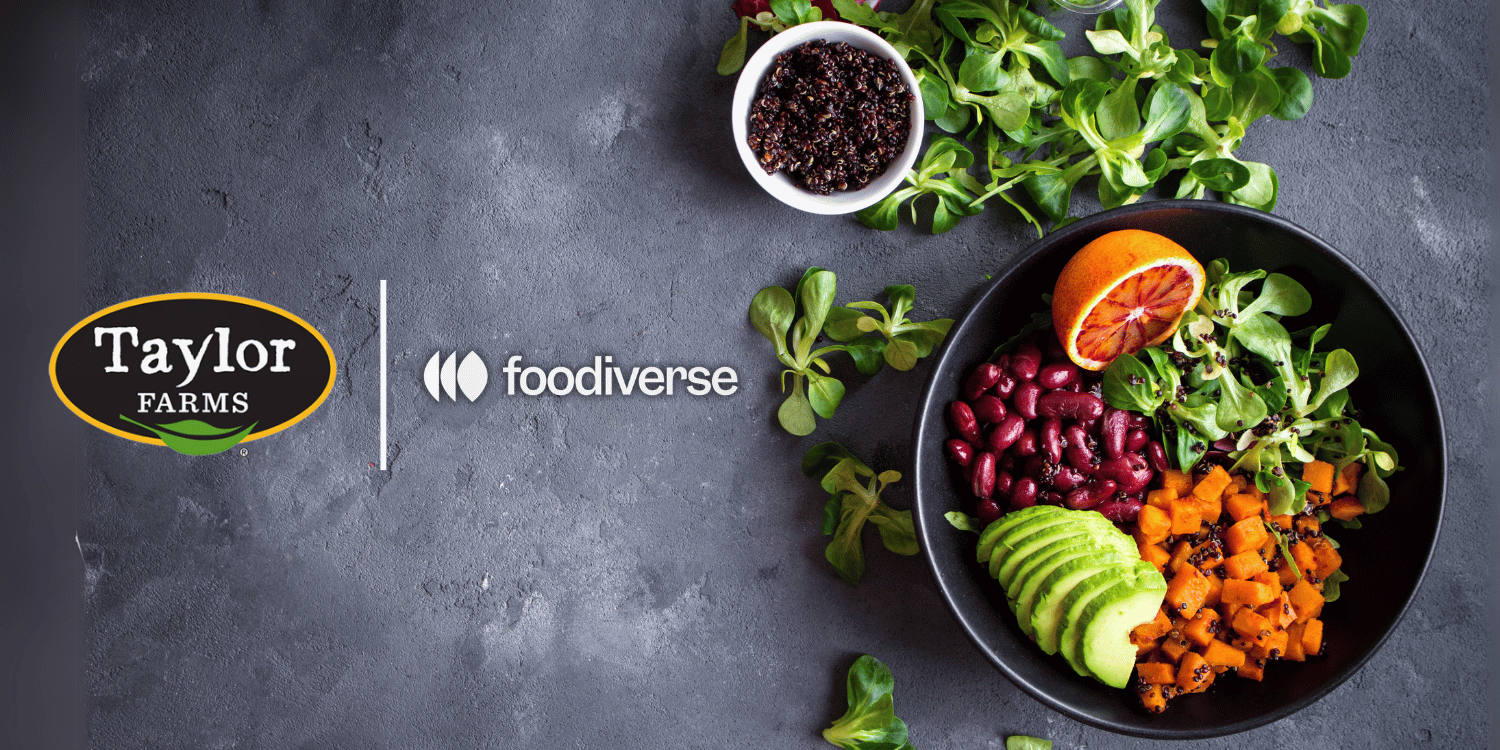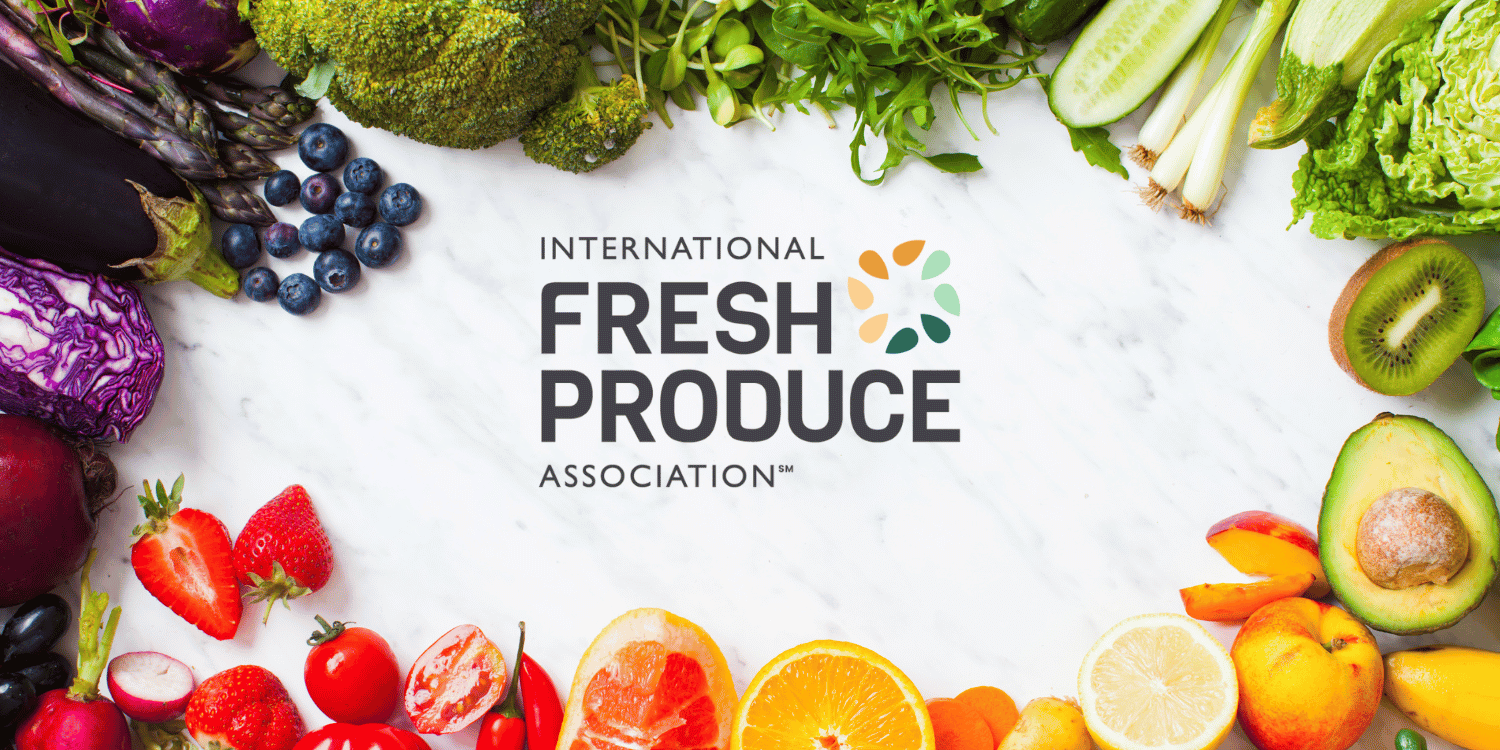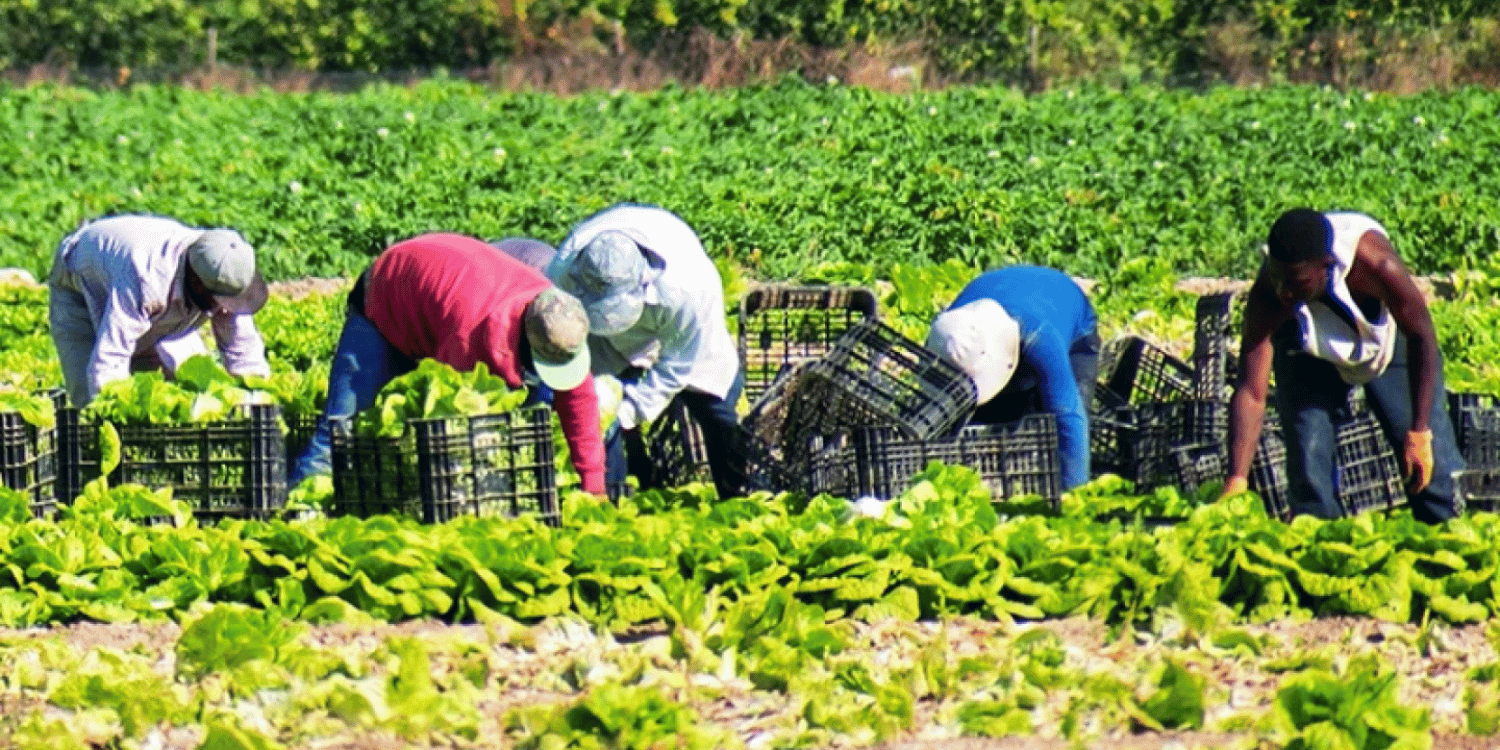Breaking into the retail grocery market can be a daunting task, particularly with established giants like Whole Foods Market.
Understanding their purchasing standards and consumer trends is crucial for producers aiming to get their products on the shelves.
In this article, we aim to shed light on various strategies that might come in handy in doing so.
From comprehensive information on their vendor requirements to insights on building strong relationships with regional buyers, we have it all covered.
The focus is not only on getting your fresh produce into the market but also on ensuring its successful shelf life.
Read further as we decode the steps to transform your hard work into a win-win partnership with Whole Foods Market.
- Approach Whole Foods’ regional buyers with product samples.
- Join farmer’s markets where Whole Foods scouts products.
- Apply through Whole Foods’ Local Producer Loan Program.
- Improve produce packaging to attract Whole Foods.
- Achieve USDA organic certification for produce.
While these key takeaways offer a valuable head-start, the following sections of this article will go deeper, examining these strategies in more detail. Our in-depth exploration will provide you with a clearer grasp on just how you can navigate the unique and often complex process of getting local produce into a major retailer like Whole Foods.
In our upcoming segments, we’ll dissect the intricacies behind each strategy, shedding light on the practical steps you need to take on the journey toward achieving this goal. By understanding the entire process, you’ll be better equipped to align your efforts with the expectations and values that Whole Foods holds for the products it stocks.
Don’t forget, this broad topic intertwines with other important aspects such as organic certification, marketing techniques, and sustainable packaging, so stay tuned for our comprehensive dissection of these areas. This knowledge is not just gainful but essential in formulating a successful approach tailored to Whole Foods standards. Let me tell you, let’s keep going.
Contents
- Strategies For Getting Fresh Produce Into Whole Foods Market
- 1. Approach Whole Foods’ regional buyers with product samples
- 2. Join farmer’s markets where Whole Foods scouts products
- 3. Apply through Whole Foods’ Local Producer Loan Program
- 4. Improve Produce Packaging to Attract Whole Foods
- 5. Achieve USDA organic certification for produce
- 6. Establish strong brand presence to attract buyers
- 7. Contact Whole Foods Market’s category buyer directly
- 8. Market Your Produce as Sustainable and Ethical
- 9. Participate in Whole Foods sponsored trading events
- 10. Increase production to meet Whole Foods’ demand
- 12. Develop Unique Produce Varieties to Pique Interest
- 13. Know Whole Foods Market’s Quality Standards
- 14. Develop Consistent Supply Chain to Ensure Reliability
- 15. Use Digital Platforms to Showcase Produce Quality
- The Bottom Line
Strategies For Getting Fresh Produce Into Whole Foods Market
1. Approach Whole Foods’ regional buyers with product samples
In Short: To get fresh produce onto Whole Foods Market shelves, you must meet their standards and expectations, approaching their regional buyers with high-quality, USDA certified, well-presented samples. Additionally, it can be advantageous to participate in farmers’ markets where Whole Foods scouts for potential vendors.
Sourcing your fresh produce to Whole Foods Market involves meeting the standards and expectations of this particular retailer.
One of the fundamental steps is to approach regional buyers of Whole Foods directly with samples of your produce.
Notably, Whole Foods places high value on fresh and organic commodities, so your approach should emphasize on these traits of your items.
I want you to remember, presenting your products to Whole Foods starts with understanding their unique business model and customer expectations.
Before you go about approaching regional buyers, it is important to put some things into consideration. Here are a few of them:
- Quality: Ensure that your samples are of the highest quality. Quality is a key element that Whole Foods will consider in deciding whether to carry your produce or not.
- Packaging: While fresh produce doesn’t always require packaging, how your samples are presented can make a huge difference. Make sure your presentation aligns with the Whole Foods’ branding and standards.
- USDA Organic Certification: If your produce is organic, ensure you have USDA Organic Certification. This will give you a competitive edge.
Once the aspects in the list above are taken care of, you can proceed to arrange meetings with the regional buyers.
At these meetings, be sure to offer them a taste of the variety and quality of your produce.
This hands-on experience would be invaluable in swaying buyers to consider procuring your products.
Don’t forget to provide all relevant details about your produce: origin, cultivation methods, and any unique selling features.
Keep in mind that Whole Foods buyers are likely approached by numerous growers and suppliers, so it is crucial to stand out from the crowd.
In addition to approaching them directly, you may also consider joining farmer’s markets where Whole Foods scouts for potential vendors.
Pro Tip: To increase your chances of selling your produce to Whole Foods Market, present high-quality, USDA certified organic samples directly to their regional buyers, ensuring your packaging aligns with their branding and standards.
This strategy might be beneficial in providing you with an opportunity to show off your produce in an environment where buyers are actively seeking for new products to add to their assortment.
Overall, approaching Whole Foods’ regional buyers with product samples may not be a straightforward process but with careful planning, strategic branding, and an unwavering commitment to quality and sustainability, you can improve your chances of getting your fresh produce onto Whole Foods Market shelves.
2. Join farmer’s markets where Whole Foods scouts products
In Short: To attract the attention of Whole Foods’ regional buyers, you should participate in farmers markets and effectively showcase high-quality, unique, and sustainable produce. Improving your presentation, branding, and maintaining an active presence are key strategies for increasing your visibility and potentially opening new distribution avenues.
Whole Foods is known for curating high-quality fresh produce from local markets.
To get your produce in front of Whole Foods’ regional buyers, it’s important to insert yourself where they are scouting for new products.
One of these places is farmer’s markets.
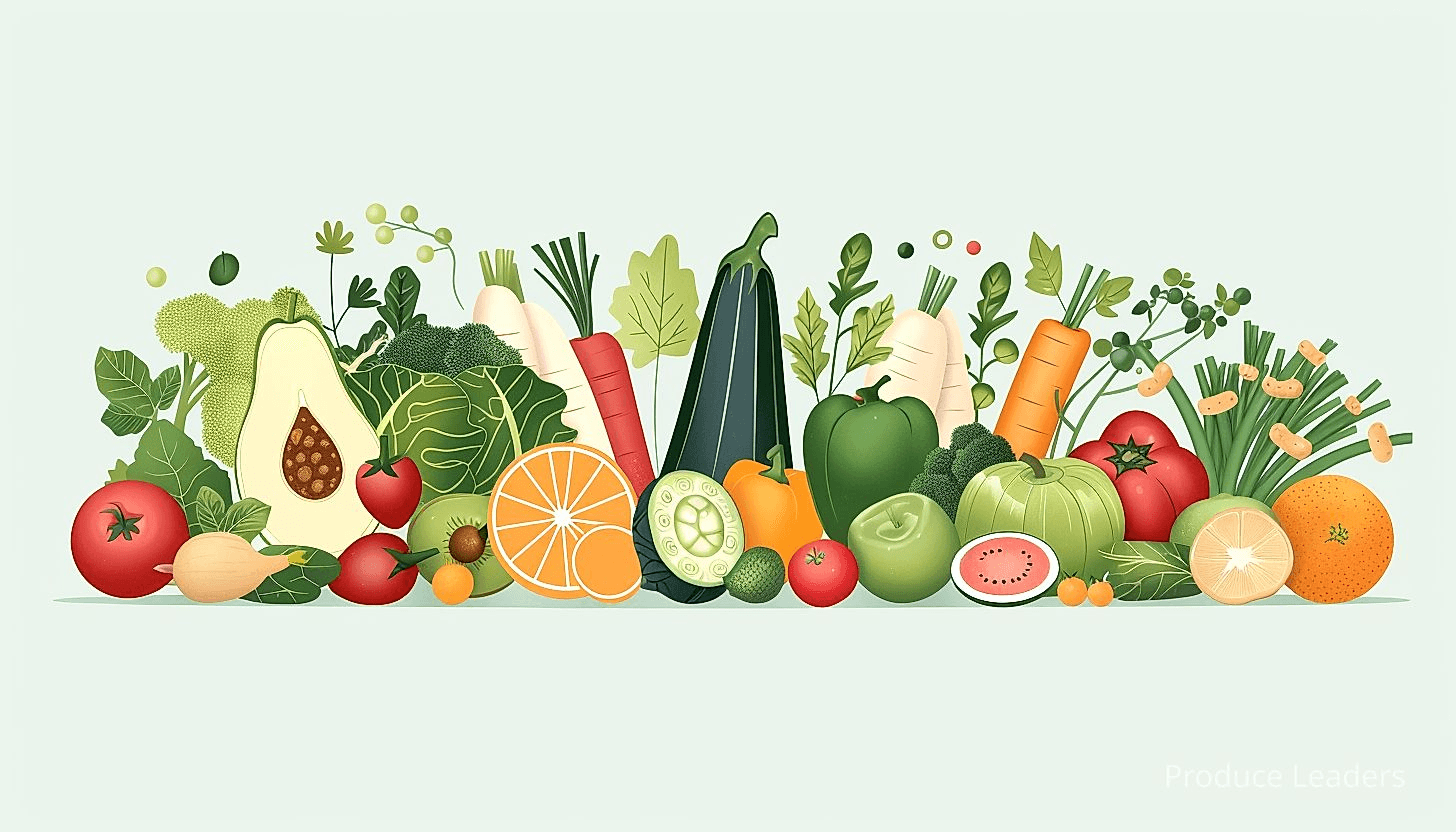
Farmer’s markets provide a great platform for you to showcase your produce, demonstrate its quality, and personally interact with prospective buyers.
This setting allows Whole Foods’ buyers to examine your produce firsthand and get a feeling for how it might fit into their stores.
However, joining a farmer’s market involves more than just turning up with your products.
You need to understand the logistics of the market, what customers and buyers are looking for, and how to make your stand display attractive and enticing.
Here are few strategies that could improve your chances of attracting Whole Foods’ scouts at farmer’s markets:
- Quality: Your produce needs to be top-notch. Buyers are looking for unique, high-quality products that will drive customers to their stores.
- Presentation: First impressions matter. Invest in a professional and eye-catching stand that showcases your products in the best light.
- Branding: The story of your brand and products plays a big role in attracting buyers. Work on creating a compelling brand story that appeals to buyers.
- An active presence: Regularly participate in various farmer’s markets. This increases your visibility and chances of getting noticed by Whole Foods’ scouts.
It’s important to remember, Whole Foods prioritizes fresh, high-quality, organic and sustainable products.
To fit into their brand, ensure your produce embodies these values, and make sure to communicate this effectively to the buyers.
By joining farmer’s markets, you not only interact directly with shoppers but also create an opportunity to capture the attention of potential big buyers like Whole Foods.
Important: To get your produce in front of Whole Foods’ buyers, you need to join and actively participate in farmer’s markets, ensuring that your products embody the values of fresh, high-quality, organic and sustainable, and that you effectively communicate these attributes to potential buyers.
Not only will this increase your visibility and potential client base, but it could also open up other avenues of distribution and sales for your fresh produce.
Therefore, joining and participating in farmers markets where Whole Foods scouts products is a crucial part of your overall strategy for getting your fresh produce into Whole Foods Market.
3. Apply through Whole Foods’ Local Producer Loan Program
In Short: The Whole Foods’ Local Producer Loan Program provides financial support to local farmers to enhance their produce and reach broader markets. The program encourages organic farming and offers opportunities for partnerships and expansion into the Whole Foods Market.
The initiative by Whole Foods’ Local Producer Loan Program is an instrumental platform for local producers to bring their fresh produce to the prevalent market.
It offers an alluring financial support to local farmers, enabling them to upscale their produce and meet the demands of Whole Foods Market.
This loan program not only eradicates the financial constraints but also fosters organic farming, keeping in mind the company’s standard for produce.
The program, indeed, brings with it an opportunity to revolutionize a farmer’s production scale and the quality of produce.
It is highly recommended for local producers to leverage this resource to penetrate Whole Foods Market.
To expedite the process, let’s walk through a few steps that local producers need to follow to apply for the Local Producer Loan Program.
- Ensure having a business plan: This includes articulation of the current state of your farm, the requirement for funding, the forecasted outcome from the funding, and the repayment plan.
- Prepare your financial documents: The program requires you to present financial documents such as past tax returns, balance sheets, and profit and loss statements.
- Demonstrate responsible farming practices: As the program is designed to support local organic farmers, you must ensure and exhibit your adherence to responsible and sustainable farming practices.
The Local Producer Loan Program is designed with a mission to support and grow local businesses.
However, like any other loan program, it has its own set of qualifications that have to be met to be considered for a loan.
Moreover, the financial support offers a lot more than just monetary assistance; it brings an opportunity for potential partnerships, provisioning a pathway to a wider market.
The process is certainly lengthy and requires a considerable amount of work; nevertheless, the potential outcome is well-worth the effort put in.
Undeniably, this platform can be the ladder for a local producer to reach heights.
The producers must bear in mind the quality standards and the sense of responsibility that comes with such associations, and utilize the opportunity to its best extent.
Don’t forget, Whole Foods prefers to maintain a certain inventory proportion from local producers, and they are continually looking for new products to introduce to their customers.
The Whole Foods’ Local Producer Loan Program can indeed be a stepping stone to your farm’s success and break into the organic food market.
This initiative further reaffirms Whole Foods’ commitment to nurturing and sustaining local farming and organic produce, providing the necessary resources and opportunities for these producers to thrive.
Therefore, it is highly advised that local farmers make the most of the platform to advance their production and get their farm-fresh produce featured in Whole Foods Markets.
4. Improve Produce Packaging to Attract Whole Foods
In Short: To increase the chances of your fresh produce being stocked in Whole Foods, focus on enhancing the attractiveness, durability, and practicality of your eco-friendly packaging. Ensure the design is consistent with your branding and includes all relevant product information, aiming to make a lasting impression that incites trust among consumers.
One significant strategy to get fresh produce into Whole Foods Market involves enhancing the maleability, durability, and visual appeal of your product packaging.
This strategy is often overlooked, but Whole Foods, like any other retailer, is heavily influenced by the presentation of your produce.
The packaging is an initial point of contact with consumers or buyers from Whole Foods and could significantly impact their decision to purchase or stock your product.

Therefore, investing in attractive and eco-friendly packaging can be a key determinant for success.
Here are several ways that you can improve your produce packaging:
- Use eco-friendly materials: Whole Foods favors products that align with their commitment to environmental sustainability. Using materials that are either recyclable or compostable will help grab their attention.
- Design appeal: Creating fresh, vibrant designs that tell your brand’s story will set your produce apart from others on the shelf. It’s worth investing in a professional designer to project a high-quality image.
- Information: Ensure all required and additional valuable information is clearly visible. This may include nutritional information, origin of the produce, and any other unique selling points your produce may have.
It’s important to remember, though, that while planning your packaging design, the core focus should be on preserving and presenting the freshness and quality of the product.
Even with the most striking and eco-friendly packaging, if the produce inside isn’t fresh, the quality alone is unlikely to entice Whole Foods buyers.
Another key aspect of packaging to consider is how the design correlates to your branding. Remember that consistency of brand is important, as buyers, and customers alike will become more comfortable with and trusting of your brand as it appears increasingly familiar.
The more consistent your branding and packaging are, the stronger the brand recognition will be, leading to a higher likelihood of being noticed or remembered by Whole Foods buyers.
You might be wondering why I’m placing so much emphasis on packaging when the product is the substantial piece.
While it’s true that the product is the most critical factor, packaging is what often draws us in, inspires trust, and makes an impact in an auction full of choices.
People are led by their senses. Colorful and well-designed packaging can create a sense of appeal and value, meaning your brand and product are seen as credible and high-quality.
Pro Tip: To successfully get your produce stocked at Whole Foods Market, invest in attractive, eco-friendly packaging that maintains the freshness and quality of your product while also conveying your brand’s story and commitment to sustainability.
So if you’re seriously thinking about approaching Whole Foods Market, start planning your packaging. It could make a significant difference to the success of getting your fresh produce stocked on their shelves.
Don’t forget, your packaging is your silent salesman – make it work for you.
5. Achieve USDA organic certification for produce
In Short: Achieving USDA Organic Certification for your produce can significantly increase brand credibility, visibility, and value, making it more appealing to markets like Whole Foods and customers who value organic products. The certification requires adapting farm techniques to meet organic standards, developing an organic system plan, applying and undergoing an on-site inspection, and while it involves time and financial commitment, the potential rewards and competitive advantage are substantial.
Winning over the discerning buyers at Whole Foods isn’t just about taste or aesthetics—it’s also about environmental harmony and healthfulness. One of the most effective strategies for drawing their attention is to achieve a USDA Organic Certification for your produce.
The USDA Organic Certification is a seal of approval from a trusted institution, confirming that your produce adheres to the stringent standards associated with organic farming. Beyond sustainable farming practices, you certainly need to pay attention to the quality of your soil and the species of plants in your crops.
To be organically certified, you must deliver on various fronts. It’s important to understand the regulations associated with organic farming and production.
These standards involve using materials and practices that enhance the ecological balance of natural systems and integrate the parts of the farming system into an ecological whole. It’s not just about not using synthetic fertilizers, pesticides, and other substances. It’s also about enhancing soil and water quality, treating animals humanely, and ensuring that the energy consumed is renewable where possible.
Here is a list of some crucial steps on your journey to USDA Organic Certification:
- Adapt your farming and production techniques to meet organic standards.
- Develop a detailed organic system plan that describes your practices and substances.
- Implement the plan and organize all the necessary records, which you’ll need to keep for at least five years.
- Apply for certification, including all required fees and information, to a USDA-accredited certifying agent.
- Undergoing the on-site inspection conducted by the certifying agent.
Obtaining this certification certainly requires time investment, in addition to thorough record-keeping and reporting. The process also involves a financial commitment as the certification comes with various fees including application fees, annual renewal fees, assessment fees on annual production or sales, and inspection fees.
However, the investment is well worth it. The USDA organic seal not only increases your brand credibility significantly, but it also helps you command a higher price for your produce.
Moreover, grocery chains like Whole Foods tend to highlight USDA Certified Organic products on their shelves, leading to better visibility and an increased likelihood of attracting customers that value organic produce.
Beyond an undeniable boost in sales and visibility, achieving organic certification is also a reflection of your commitment to sustainable and ethical farming practices. It’s a testament to your dedication to maintaining a high-quality, nutritious, and environmentally-friendly product line.
Let me tell you, while the journey to obtaining USDA certification may initially look challenging, the rewards are potentially great and can lend a key competitive advantage. Keep in mind, failing to meet the requirements doesn’t only mean missing out on the opportunity to sell your produce at Whole Foods, but it can also limit your access to other major markets as well.
This strategy, going the USDA Certified Organic route, is not to be overlooked while strategizing your path into Whole Foods Market. Your effort to achieve the certification could be a game-changer in how Whole Foods and its customers perceive and choose your produce.
6. Establish strong brand presence to attract buyers
In Short: To penetrate markets like Whole Foods, producers must establish a strong brand presence, encompassing visibility, reputation, unique characteristics, and consumer relationships. This process includes crafting a distinctive identity, embodying shared values and ethos, providing transparency, actively engaging with audiences and establishing trust, all aligning with a high-quality, ethical, and sustainable produce narrative.
In order to penetrate the Whole Foods Market, it is imperative for producers to establish a strong brand presence. Brand presence is the visibility and reputation a brand has in the marketplace, created by its unique characteristics, values, distribution channels, marketing, and the relationship with its consumers. Increasing your brand presence communicates to buyers that your produce is reliable, of excellent quality, and a desirable product to be associated with.
Crafting a distinctive brand identity is fundamental to setting your produce apart from the competition. This includes creating a memorable logo, unique packaging, a consistent tone of voice, and brand values aligned with Whole Foods Market’s own focus on health, environmental stewardship, quality, and sustainability.
Building a strong brand presence is not solely about the physical appearance of your produce. It also encompasses the stories and values that your brand represents. Shared values create a connection between your brand and buyers, fostering trust and loyalty, and increase its appeal to Whole Foods Market.
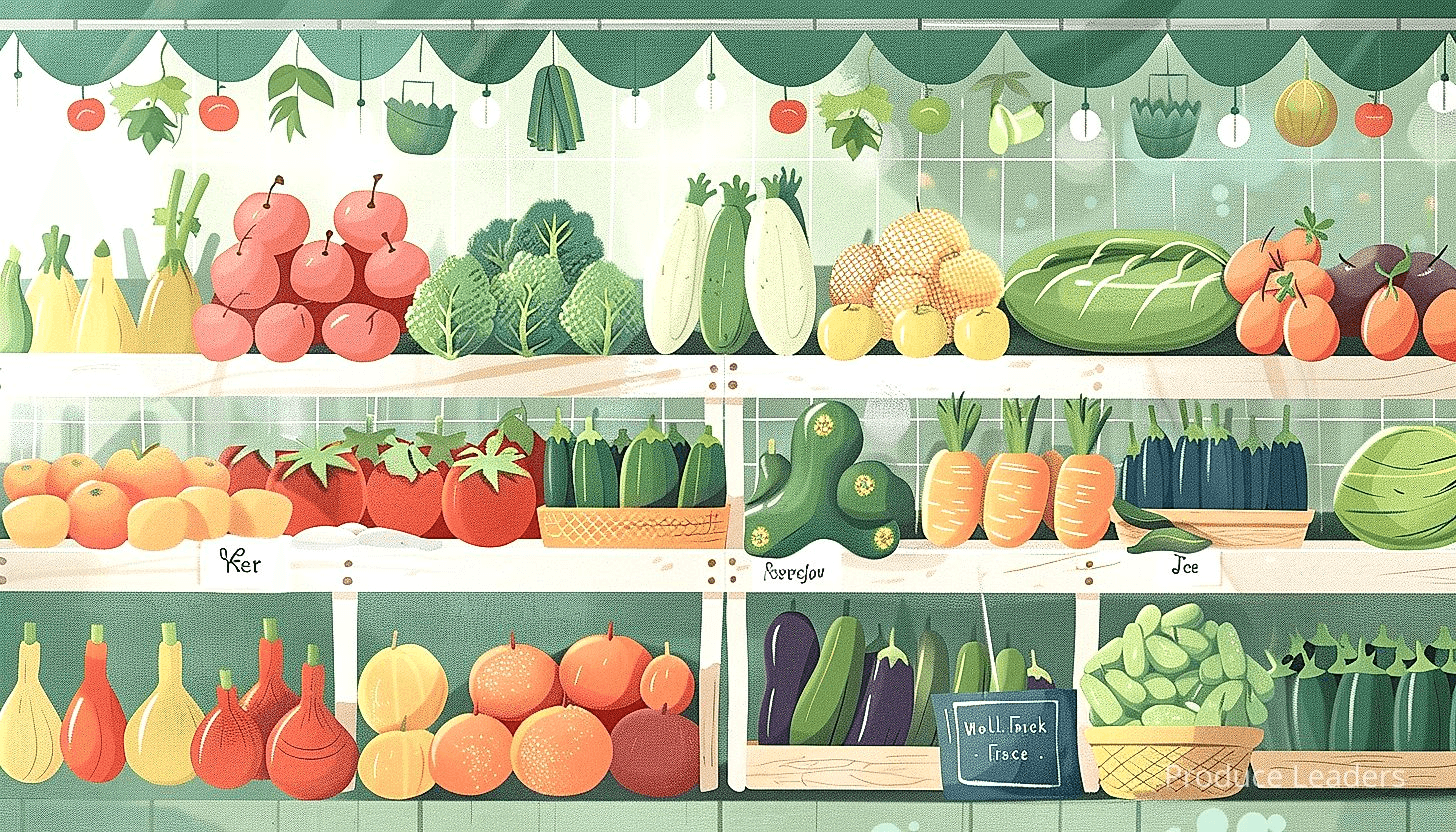
Your brand story should resonate with the ethos of your target market. In this case, Whole Foods Market prides itself on selling the highest quality natural and organic products. Your brand should therefore also embody this commitment to quality and ethical practices to match this ethos.
Telling this story effectively requires transparency. Today’s consumers are discerning, and value transparency in how products are made, prompting them to support businesses that are open about their processes, ingredients, supply chain, and social responsibility.
A great way of amplifying your brand’s presence is through active engagement with your audience. This can be via social media, farmers’ markets, or sponsorships at local community events. These platforms provide opportunities to present your brand story, demonstrate brand values, and establish relationships with potential consumers and retail partners alike.
Before diving into the branding process, consider the following points:
- Understand your market: Research Whole Foods Market and its customer base to get a sense of what they are looking for in your brand and product.
- Define your brand values: Identify what values are intricately linked to your brand. An emphasis on organic farming, perhaps, or a commitment to local suppliers. Make these values compelling, transparent, and consistent.
- Invest in packaging and design: Invest time and resources into designing appealing and easily recognizable packaging that communicates your brand values and story.
- Engage your consumers: Demonstrate your brand’s unique personality and values to potential buyers through public engagements, sponsorships, and social media interactions.
Having developed a strong brand presence, prospective buyers, including those from Whole Foods Market, are more likely to perceive your products as trustworthy and high quality.
A robust brand presence therefore acts as a powerful tool for penetrating new markets and attracting leading retailers like Whole Foods Market. Not only does this boost your brand’s visibility within the market, but it also helps to inspire trust and loyalty among customers who are more inclined to support brands they well-recognize and resonate with.
Moreover, a strong brand presence can enhance your company’s credibility and reputation, positioning you as a serious player within the fresh produce industry worthy of Whole Foods Market’s attention.
In summary, establishing a strong brand presence aligns with the buyers’ desire for high-quality, ethical, and sustainable produce. It is therefore a critical strategy for fresh producers seeking to gain a foothold in the market giant that is Whole Foods.
7. Contact Whole Foods Market’s category buyer directly
In Short: Directly contacting Whole Foods Market’s category buyer is a strategic approach for producers to personalize their pitches and highlight unique aspects of their products. This method, which requires maintaining a professional dialogue, may secure a spot for your produce on their shelves if executed correctly.
As a strategy to get your fresh produce into Whole Foods Market, direct contact with their category buyer is a method that holds a significant potential argument.
Contacting Whole Foods Market’s category buyer directly presents an opportunity to grasp their attention personally towards your products, rather than having it lost among the countless other product samples they might receive.
It allows for the initiation of personal dialogue about your produce, further unveiling opportunities for product pitching, discussions on product development and even arrangements for face-to-face meetings.
Direct contact also gives growers the chance to highlight unique aspects of their products, whether it be a rare variety of vegetable or a novel method of cultivation.
While making contact, it’s noteworthy to appreciate the fact that category buyers are proactively looking for innovative and stand-out produce to pique their customers’ interest. Hence, it’s necessary to shine light onto anything exceptional about your produce.
Introduce what we are going to present next:
- Unique and stand out products to pique customer’s interest
- Efforts towards sustainable produce cultivation
- Information regarding USDA organic certification if you have one
- Your interest in Whole Foods Market’s Local Producer Loan Program
Providing the information mentioned above in your direct contact not only showcases your interest and commitment in providing high-quality and ethically grown produce, but also displays your dedication towards the alignment with Whole Foods Markets’ philosophy of selling pure, sustainably-farmed, and responsibly-produced products.
Moreover, it’s crucial to maintain professionalism while using this direct method of contact. Employing precise, concise, and clear communication effectively transmits your message without leaving room for ambiguity.
Remember that it’s not uncommon for large businesses like Whole Foods to have a strict policy regarding soliciting, so it’s important to understand and respect their process.
Filling out their product submission forms and taking part in various sponsored events can be a wise stepping stone before making direct contact.
Once direct contact is established, consistency is key. Frequent follow ups show your seriousness and dedication.
Important: Directly contacting Whole Foods Market’s category buyer offers an opportunity to personally pitch your produce, highlight its unique aspects, and align with the company’s philosophy of selling sustainably farmed and responsibly produced products, potentially securing a place for your produce on their shelves.
However, it’s important to not come off as intrusive or bothersome. Striking a balance between being persistent without becoming annoying is crucial in maintaining a positive relationship with the store’s buyers.
It’s evident therefore, that directly contacting a Whole Foods Market’s category buyer requires careful strategy, but with the right approach and a standout product, it may serve as your golden ticket into securing a spot on Whole Foods Market’s shelves.
8. Market Your Produce as Sustainable and Ethical
In Short: Highlighting sustainability and ethical practices is vital for agricultural businesses selling to Whole Foods, which values and promotes such brands. Use transparency, certifications, eco-friendly packaging, and local sourcing as strategic points in your marketing narrative to attract consumers who value these principles.
When positioning any product in today’s market, the sustainability and ethicality of the production methods are of utmost importance.
Consumers are making more responsible choices, and companies like Whole Foods are no exception to this shift in consumer behavior.
Therefore, it is crucial for your agricultural business to highlight the sustainable practices and ethical standards you adhere to, while marketing your fresh produce to Whole Foods.

Integrating practices such as recycling, waste management, organic farming, fair trade, and responsible packaging can contribute significantly towards the sustainability of your produce.
Transparently sharing these practices with Whole Foods could significantly appeal to their demand for eco-friendly products.
On the other hand, ethicality is often considered in terms of treatment of workforce, fair wages, and the overall standards upheld in the farming community.
Prioritize exhibiting your commitment to improving these aspects, to make a strong case when positioning your produce to Whole Foods.
Whole Foods is known for its dedication to promoting brands that meet a minimum standard of sustainability and ethical practices.
Therefore, marketing your produce in a way that showcases these principles can effectively distinguish your products in Whole Foods’ extensive product line.
Here are some strategic points to consider:
- Transparency: Share about your sustainability efforts and ethical standards
- Certification: Obtain relevant certifications such as USDA organic or Fair Trade
- Packaging: Use biodegradable or recycled packaging materials
- Local sourcing: Highlight your local sourcing efforts and benefits to local communities.
Creating a strong narrative around your sustainability and ethical efforts can be a powerful marketing tool.
This not only helps to attract buyers from Whole Foods but can also build a loyal customer base that values your commitment to sustainability and ethicality.
Remember that sustainability and ethical practices are not just about complying with market demands, they are an imperative part of your business’s social responsibility and its long-term viability.
Pro Tip: To effectively market your produce, highlight and share your sustainability and ethical standards, utilize eco-friendly packaging, and consider obtaining relevant certifications like USDA Organic or Fair Trade.
Make sure to invest in these aspects for the holistic growth of your business and for the well-being of the environment and society at large.
While it might require a meaningful investment upfront, the enhanced brand image and customer loyalty gained will lay a solid foundation for sustainable growth in the long run.
9. Participate in Whole Foods sponsored trading events
In Short: By participating in Whole Foods sponsored trading events, you can showcase your products and gain visibility with Whole Foods buyers. Taking part in these events also offers opportunities for valuable feedback and understanding market dynamics, increasing your chances of success.
If you’re targeting Whole Foods Market as your produce outlet, it’s worth noting that participating in Whole Foods sponsored trading events can be quite beneficial.
Whole Foods often holds these events as a platform for local and regional producers to showcase their products and get the opportunity to interact directly with Whole Foods buyers.
These events are a wonderful way for you to gain visibility and create a lasting impression.
The buyers at these events are always on the lookout for high-quality, unique, and sustainable products that align with Whole Foods Market’s objectives.
Your participation in these events can also be a great opportunity to understand the dynamics of the market and Whole Foods’ retailing expectations.
It’s also crucial that when participating, you take it as an opportunity to solicit constructive feedback from the buyers.
This feedback can give you invaluable insights on how to improve your offerings and further align them with the preferences of Whole Foods Market’s buyers and customers.
Let’s review the key factors to consider when preparing for a Whole Foods sponsored trading event:
- Ensure your produce is of the highest quality: Quality is the primary purchasing factor for Whole Foods buyers and customers. Your produce should be in its best condition at the event.
- Work on your presentation to stand out: How you present your products and brand plays a massive part in making an impression. Ensure your presentation is compelling and attractive.
- Be prepared to answer questions about your produce: From the growing process to its nutrition profile, you should be ready to answer all questions from the buyers.
- Know Whole Foods Market’s quality standards: Understanding these standards can help you prepare accordingly and increase the odds of your produce getting selected.
In essence, the more effectively you can showcase your quality, uniqueness, and commitment to sustainability in these events, the higher the chances of catching the attention of Whole Foods’ buyers.
It’s also recommendable that you network with other vendors at these events. They can share their experiences and tips, which can enhance your chances of success.
Keep in mind, these events are not just about selling; it’s about creating valuable relationships and understanding the market dynamics.
They provide rare opportunities to communicate your brand’s story, ethos, and products to Whole Foods’ buyers face-to-face, and potentially, get your fresh produce on their shelves.
Let me tell you, make sure to take full advantage of Whole Foods sponsored trading events and derive the maximum benefit from them to carve your niche in Whole Foods Market.
10. Increase production to meet Whole Foods’ demand
In Short: To meet Whole Foods’ demand, fresh produce suppliers must strategically scale up their production without sacrificing quality. This requires proper planning, optimizing agricultural practices, investing in high-yield crop varieties, and ensuring efficient supply chain structures.
As an established or emerging fresh produce supplier, your goal is naturally to place your products in esteemed establishments such as Whole Foods.
To do this, a salient strategy is to scale up your production to meet the store’s demand.
Whole Foods is revered for stocking high-quality, often organic produce, sourced from diverse suppliers who can consistently provide the store’s numerous branches.
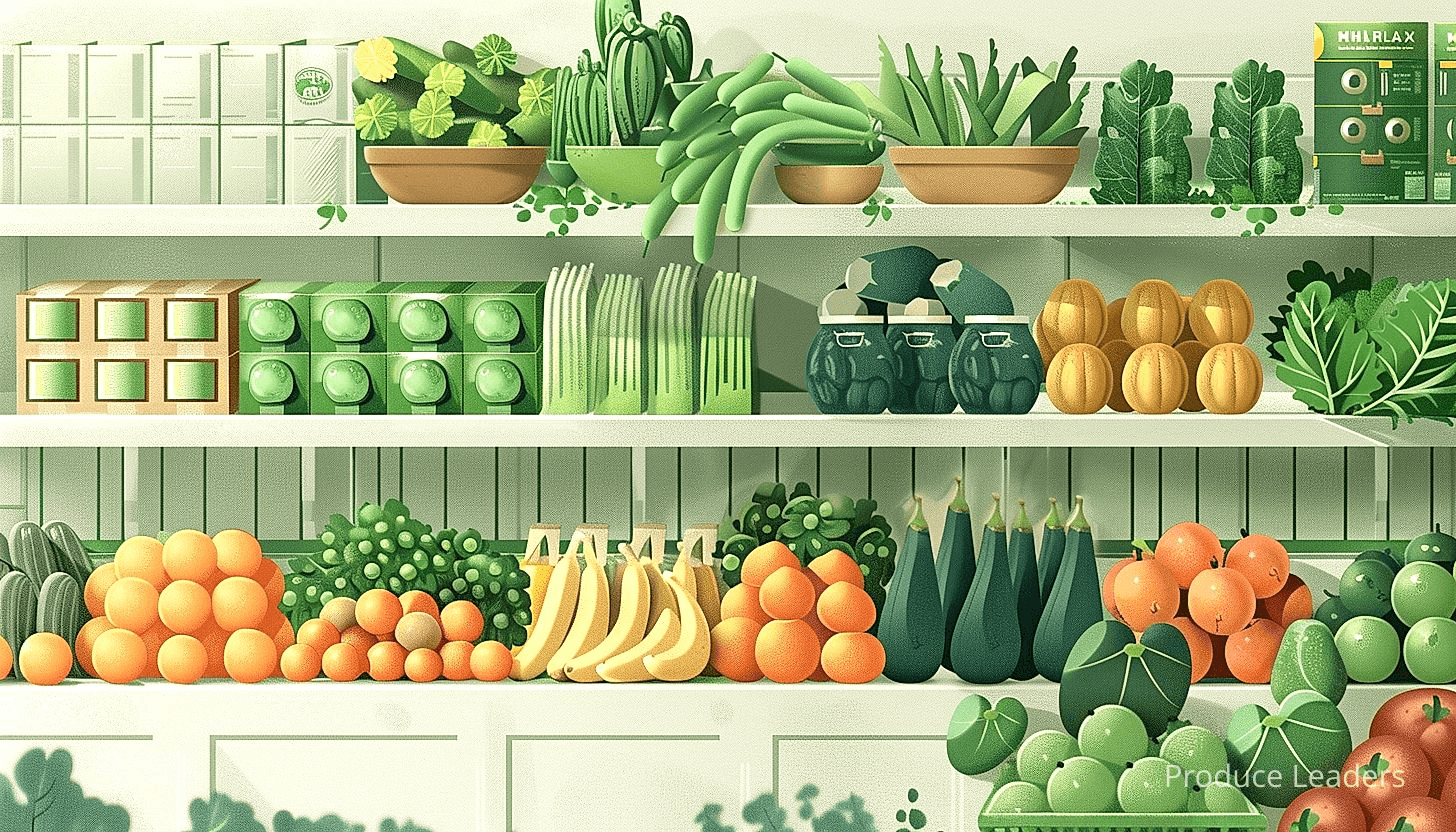
It is key to appreciate the volume that Whole Foods requires; scaling up production is no easy feat.
There are specific factors you must consider to ensure your business can successfully expand without sacrificing quality – a value Whole Foods’ stakes highly.
From the onset, understand that expanding production is an investment.
You typically require additional resources, time, labor and perhaps even land.
Proper planning is thus essential in evaluating these factors and ensuring your operations can handle the increase in production scale.
One important strategy for streamlining this process is optimizing your agricultural practices.
For instance, you can use better technology and methods for soil management, irrigation, pest control, and harvesting to increase yields.
Advance in your cultivation procedures are instrumental to support your increased production goals. Let’s review a few actions you could take:
- Substitute manual labor with mechanization. Introducing equipment to automate processes can enable you to increase production without a significant rise in workload or manpower.
- Implement sustainable farming practices. Sustainable practices lead to healthier crops, infuse resilience in them, and in turn, enhance yield quantity and quality.
- Invest in high-yield varieties. Some crop varieties are genetically inclined to yield more than others. Using such varieties can maximize your production.
Additionally, strong relationships with the marketing channels are also essential when increasing your produce volume.
Ensure that there are efficient and reliable supply chain structures in place to facilitate the escalated output of your produce.
Remember that Whole Foods seeks consistency; thus, execute your expansion cautiously to ensure you can deliver on the expected quality and quantity.
Beyond expanding production, it is also crucial to continuously monitor and evaluate your expansion strategy.
Important: Increasing your production to meet Whole Foods’ demand is a strategic expansion that requires balancing quality with quantity, maintaining brand integrity, and embracing changes and improvements in your farming practices.
Stay adaptable, embrace changes and improvements in your farming practices to ensure you continue to match Whole Foods’ evolving needs and preferences.
In essence, increasing your production to meet Whole Foods’ demand is a deliberate, strategic expansion that balances quality with quantity and maintains brand integrity.
12. Develop Unique Produce Varieties to Pique Interest
In Short: Developing unique and high-quality produce varieties is key to attracting Whole Foods Market buyers. To create distinction, pursue innovation without compromising ethical farming practices, leveraging crossbreeding techniques, consultation with agriculture experts, and enhancing existing products.
A crucial part of infiltrating the Whole Foods Market with your fresh produce involves fostering innovation and uniqueness. Developing unique produce varieties can emphatically catch the attention of Whole Foods buyers and customers.
Whole Foods Market always looks out for products that stand out – both in quality and style. They love to offer their customers something that is not commonly found in every grocery store.
Your unique and distinctive produce could be anything from a new way of growing something common, like organic lettuce, to coming up with an innovative hybrid fruit concept.
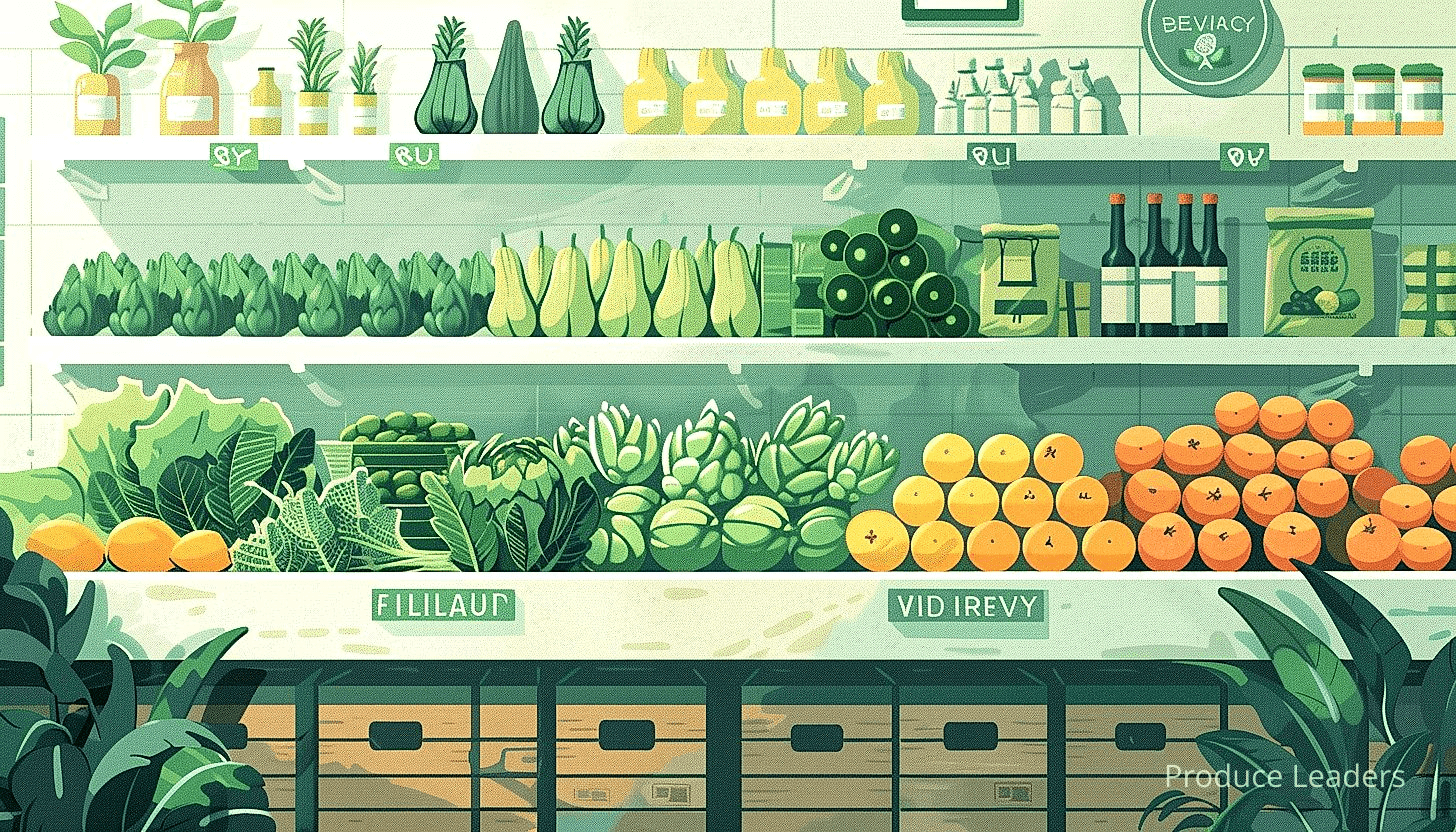
Not only does this strategy make your products distinct, but it also adds a level of exclusivity and uniqueness to Whole Foods’ selection.
It is crucial, however, that while developing unique products, you do not compromise on quality or deviate from ethical farming practices.
Here are some key steps you could follow to develop your unique produce:
- Investigate what’s already out there in the market—find out what’s common, and what’s not. Use this knowledge to create something truly unique.
- Experiment with crossbreeding. This technique can lead to fascinating and enticing new hybrid fruits and vegetables.
- Consider value-added products. These are primary ag-products converted to an increased value product through a unique process, like organic dried fruits or spiced, roasted veggies.
- Connect with agriculture scientists and experts who can provide their insights and knowledge to draw up a comprehensive plan of developing innovative produce.
Various customers are interested in trying out new, unique, and organic options when it comes to their food choices.
By developing new and unique produce, you both cater to this demand and provide Whole Food Markets an exciting product portfolio adding to their exclusivity.
Working towards developing exclusive products may seem like a daunting task at first, but remember, the process of innovation doesn’t have to happen overnight.
If developing new products seems like an insurmountable challenge, consider working with what you already have. The idea is to present a product that brings something new and exciting to the table at Whole Foods.
The uniqueness of your produce may just be the distinguishing factor that convinces Whole Foods buyers to give your products a chance.
Pro Tip: To successfully infiltrate the Whole Foods Market, focus on fostering innovation by developing distinctive and high-quality produce without compromising on ethical farming practices, this uniqueness not only adds to Whole Foods’ exclusivity but also increases the value of your products.
By consistently striving for innovation in the development of your fresh produce, you not only increase the value of your products, but you also set yourself apart from others in the market.
A relentless pursuit of innovation might eventually be your recipe for success in getting your fresh produce into the Whole Foods Market.
13. Know Whole Foods Market’s Quality Standards
In Short: Understanding and aligning with Whole Foods’ rigorous quality standards is crucial for getting your produce accepted by the supermarket chain. These standards focus on natural products, responsible sourcing, transparency in process and ingredients, and adherence to organic farming practices.
One of the critical steps in getting your fresh produce into Whole Foods Market is understanding and aligning with their quality standards.
Whole Foods Market has established a reputation on its commitment to the highest quality food and robust quality standards. Comprehending these standards assures that your products align with the brand’s philosophy.
The quality standards set by Whole Foods revolve around the ingredients, sourcing methods, and production processes that are acceptable, ensuring that customers get nothing but the finest, freshest, and cleanest food.
Whole Foods has a rigorous vetting system that products must go through before they find a place on the store shelves. This adheres strictly to eating and drinking standards.
Safety and transparency are also crucial components of Whole Foods’ quality standards. Producers are expected to use only the proven and accepted ingredients and materials.
Therefore, knowing these quality standards will influence how you cultivate, prepare, package, and even market your produce for Whole Foods Market.
Here are some critical aspects of Whole Foods’ quality standards to keep in mind:
- Natural products: All products should be free from synthetic preservatives, artificial colors and flavors, sweeteners, and hydrogenated fats.
- Responsible sourcing: The supermarket chain has strict standards on how products are sourced, ensuring they come from producers who operate ethically and sustainably. This includes aspects like labor rights, environmental practices, and animal welfare.
- Transparency: Whole Foods believes in full disclosure about the products they sell. It means everything, from sourcing to processing, needs to be communicated transparently.
- Organic produce: They strongly encourage organic farming practices and prefer produce grown following the USDA Organic Standards.
Knowing these standards is crucial to getting your fresh produce into Whole Foods Market. It’s not about just having great-tasting fruits and vegetables. The store demands excellence in every aspect of production to uphold its quality standards.
It’s also important to keep abreast of changes and adjustments to these standards, to ensure your produce aligns with these changes. Whole Foods maintains a dynamic view on quality standards, continually updating them, based on current scientific research and consumer demand.
In addition, it would prove beneficial to go over Whole Food’s Unacceptable Ingredients for Food list, which they continually update. This ensures that your produce does not contain anything that could hinder its acceptance in the store.
Important: Understanding and aligning with Whole Foods Market’s quality standards is a crucial step to get your fresh produce on their shelves, which includes adhering to natural, organic, and sustainable practices, promoting transparency, and avoiding unacceptable ingredients.
Knowledge is, and will always be, power in this context. The better you understand Whole Foods’ quality standards, the better the chances are that your fresh produce will become an addition to the shelves of one of the world’s leading grocery chains.
Thus, knowing the Whole Foods Market’s Quality Standards should not just be a strategy, but EMBRACE it as a part of your farming and manufacturing process.
14. Develop Consistent Supply Chain to Ensure Reliability
In Short: To foster a successful relationship with Whole Foods Market, vendors must prioritize the development of a consistent and reliable supply chain, emphasizing consistent quality of produce and regular supplier assessments. This task, while demanding, can be facilitated by understanding Whole Foods’ specific requirements, implementing robust quality control, managing demand forecasts, and maintaining transparency and traceability in operations.
Realizing the significance of a consistent supply chain is an essential aspect of winning Whole Foods Market’s attention and securing a space in their vendor lineup.
To ensure utmost reliability, you should prioritize obtaining high-quality produce consistently.
Whole Foods sets a high standard for its products, and it’s therefore critical for your produce to be consistent in terms of quality.
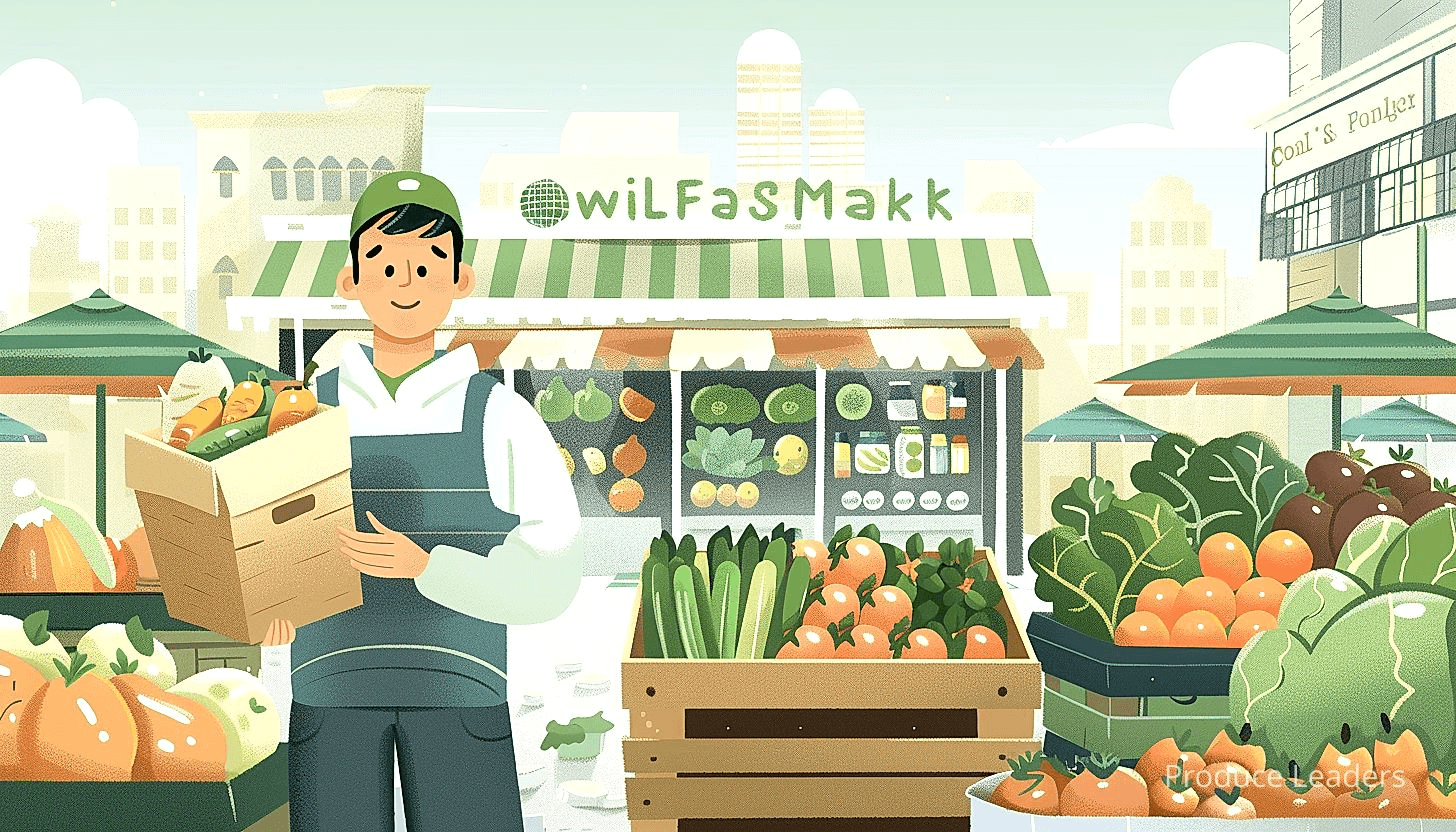
Inconsistencies could put your relations with Whole Foods at risk, potentially leading to a loss of trust and credibility.
In developing a consistent supply chain, there are key considerations to focus on:
- Regularly Assessing Suppliers: Ongoing evaluation of your suppliers’ performance and reliability will help maintain consistency.
- Quality Control Measures: Implementing stringent quality control measures can also ensure your produce remains at a consistently high standard.
- Backup Plans: Having alternative suppliers in case of unforeseen circumstances can avert supply chain disruptions.
- Predicting Demand: Use historical data to forecast demands and plan your supplies accordingly to avoid shortages or overstock situations.
These elements, combined, contribute significantly to the development of a consistent supply chain that the Whole Foods Market admires.
Apart from the considerations mentioned above, understanding the specific needs of Whole Foods Market is also important to supply chain management.
Get to know Whole Foods’ likes and dislikes, peak sales periods, and expectations regarding delivery quantity and frequency.
This insight will enable you to make necessary adjustments in your supply chain to align it with the needs and requirements of Whole Foods.
Also, applying technologies that improve traceability and transparency in your supply chain can optimize operations and boost productivity.
Whole Foods Market is known for its dedication to sustainability and will appreciate knowing where its produce comes from and how it is grown and transported.
Pro Tip: To successfully capture Whole Foods Market’s interest and secure a vendor slot, ensure regular evaluation and quality control measures within your supply chain, maintain backup supplier plans, forecast demands accurately, understand Whole Foods’ specific needs and use technology to improve traceability and transparency.
In the end, ensuring a consistent and reliable supply chain is no easy task and requires dedication, strategic planning, and regular evaluations.
But by achieving this consistency, you will increase your chances of being taken on as a vendor by Whole Foods, while also strengthening your operations overall.
15. Use Digital Platforms to Showcase Produce Quality
In Short: Using digital platforms to present high-quality produce can significantly increase visibility with potential buyers including Whole Foods. Websites, social media, and e-commerce are effective mediums that can be used to showcase quality, engage the audience, provide transparent insights, garner customer reviews, and establish brand authority.
Within the strategy of getting fresh produce into Whole Foods Market, utilizing digital platforms to showcase produce quality is a crucial step often overlooked by many producers.
Whole Foods Market, like all other retailers, recognizes the importance of digital channels in modern commerce. Online platforms offer extensive reach and visibility, enabling producers to showcase their quality in the best light and capture the attention of desired clients.
Digital platforms can take multiple forms, each with unique advantages. Websites, social media, and dedicated e-commerce platforms provide the means to visually present high-quality produce to potential buyers, including Whole Foods.
Let’s explore few of these in a bit more depth:
- Websites: A website can be your digital storefront. Use high-quality imaging and interactive features to exhibit your produce. Additionally, providing detailed descriptions of your production and quality control mechanisms instills trust and attracts partners committed to quality, like Whole Foods.
- Social Media: These platforms are highly valued for their reach and engagement capabilities. Regular updates on your produce, harvesting process, new variants, etc., not only engage your audience but also reflect transparency, a trait appreciated by Whole Foods.
- E-commerce: By enlisting available produce on platforms like Amazon or directly via your website, you make it easier for any potential partner to assess your produce’s quality, potential variety, and buyer’s feedback, all of which can influence the interest of Whole Foods.
But how your produce is presented online is as crucial as choosing the right platform.
High-quality, captivating images are important as they are a digital substitution for customers to physically see and touch the produce. An attractive presentation can trigger the right emotions convincing the buyer about your produce’s quality and freshness.
Involve professional photographers and designers specialized in food photography to highlight the unique features, color, texture and overall superior quality of your produce. Place a special emphasis on the fresh, organic look of the produce, a key selling point in Whole Foods Market.
Customer reviews and testimonials are another amazing tool to showcase the quality of your produce. A well-written and authentic opinion from a genuine customer act as a strong endorsement for your product’s quality and reliability.
Lastly, consider tying in some form of educational information. This could be relevant blogs, infographics, or videos on your website that teach customers about farming practices you follow, organic methods, benefits of eating fresh. Such an initiative positions your brand as an authority in the industry and fosters higher credibility and trustworthiness.
Keep in mind, Whole Foods Market is dedicated to selling high-quality fresh produce from ethical sources. By effectively utilizing digital platforms to communicate these aspects of your products, you make your produce more attractive to Whole Foods and are more likely to secure a spot on their shelves.
The Bottom Line
Implementing the outlined strategies enables producers to effectively navigate the competitive landscape of the Whole Foods Market.
Adherence to the company’s stringent quality assurances and sustainable farming practices is non-negotiable, while creating differentiation through unique produce offerings positions for potential growth.
Additionally, building strong relationships with buyers, and demonstrating commitment to Whole Foods core values increases visibility and opportunity within the market.
Overall, the key to accessing Whole Foods Market lies in aligning with its high standards, creating product distinction, and fostering productive industry relationships.

